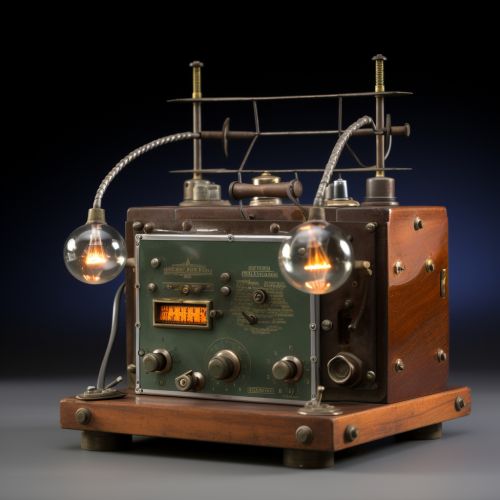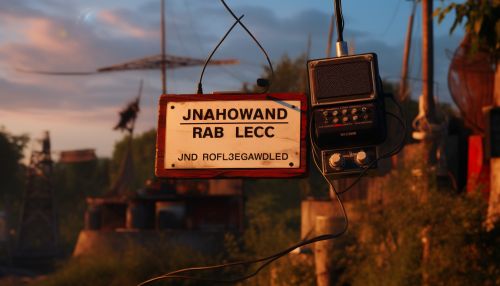Radio Jamming
Introduction
Radio jamming is the deliberate transmission of radio signals that disrupt communications by decreasing the signal to noise ratio. Unlike electronic warfare, which involves the use of radio waves to confuse or disable the enemy's radar, radio jamming involves the deliberate transmission of radio signals to interfere with the operation of a radar by saturating its receiver with noise or false information1(https://www.britannica.com/technology/jamming-electronics).


History
The concept of radio jamming dates back to the early 20th century. During World War II, both the Allies and the Axis powers made extensive use of radio jamming, to interfere with each other's communication systems2(https://www.jstor.org/stable/44674604).
Types of Radio Jamming
There are several types of radio jamming, including spot, sweep, pulse, random noise, and barrage jamming.
Spot Jamming
Spot jamming occurs when a jammer focuses all of its power on a single frequency. While this would severely degrade the signal at the specific frequency, it would leave the rest of the bandwidth open for communication3(https://ieeexplore.ieee.org/document/6363911).


Sweep Jamming
Sweep jamming is when a jammer's full power is rapidly switched between frequencies within a certain range. This type of jamming can effectively block signals in the range, but it does not affect the other frequencies outside the range4(https://www.sciencedirect.com/science/article/pii/S1877050916301115).
Pulse Jamming
Pulse jamming involves the transmission of short bursts of noise at regular intervals. This type of jamming is particularly effective against pulse radar systems5(https://www.sciencedirect.com/science/article/pii/S1877050916301115).
Random Noise Jamming
Random noise jamming involves the transmission of wideband noise with no specific pattern. This type of jamming can affect a wide range of frequencies and is difficult to filter out6(https://ieeexplore.ieee.org/document/6363911).
Barrage Jamming
Barrage jamming involves the transmission of noise over a wide range of frequencies simultaneously. This type of jamming can effectively block a large number of signals, but it requires a high amount of power7(https://www.sciencedirect.com/science/article/pii/S1877050916301115).


Techniques for Overcoming Jamming
There are several techniques that can be used to overcome radio jamming. These include frequency hopping, spread spectrum, directional antennas, and low probability of intercept (LPI) techniques8(https://ieeexplore.ieee.org/document/6363911).
Frequency Hopping
Frequency hopping is a method of transmitting radio signals by rapidly switching a carrier among many frequency channels, using a pseudorandom sequence known to both transmitter and receiver9(https://www.sciencedirect.com/science/article/pii/S1877050916301115).
Spread Spectrum
Spread spectrum is a technique in which a signal is spread over a wide band of frequencies. This makes the signal less susceptible to interference and jamming10(https://ieeexplore.ieee.org/document/6363911).
Directional Antennas
Directional antennas can be used to focus the signal in a specific direction, reducing the chance of it being intercepted and jammed11(https://www.sciencedirect.com/science/article/pii/S1877050916301115).
Low Probability of Intercept Techniques
Low probability of intercept techniques are methods used to avoid detection by enemy radar. These techniques include the use of low power output, irregular transmission patterns, and complex modulation schemes12(https://ieeexplore.ieee.org/document/6363911).


Legal and Ethical Considerations
Radio jamming is considered illegal in many countries due to its potential for misuse. It can disrupt emergency communications, interfere with air traffic control, and violate privacy rights. Despite this, it is often used in warfare and by authoritarian regimes to suppress dissent and control information13(https://www.jstor.org/stable/44674604).


Conclusion
Radio jamming is a complex field that involves the use of technology to interfere with radio communications. While it has been used for malicious purposes, it also has legitimate uses in warfare and security. As technology continues to advance, the techniques for both implementing and overcoming radio jamming are likely to become increasingly sophisticated.
See Also
References
1. Britannica: Jamming (electronics) 2. JSTOR: Radio Jamming in World War II 3. IEEE Xplore: Radio Jamming Techniques 4. ScienceDirect: Radio Jamming and Countermeasures 5. ScienceDirect: Radio Jamming and Countermeasures 6. IEEE Xplore: Radio Jamming Techniques 7. ScienceDirect: Radio Jamming and Countermeasures 8. IEEE Xplore: Radio Jamming Techniques 9. ScienceDirect: Radio Jamming and Countermeasures 10. IEEE Xplore: Radio Jamming Techniques 11. ScienceDirect: Radio Jamming and Countermeasures 12. IEEE Xplore: Radio Jamming Techniques 13. JSTOR: Radio Jamming in World War II
